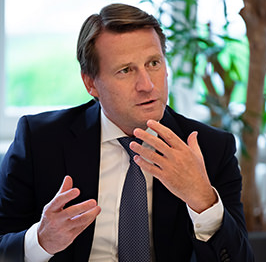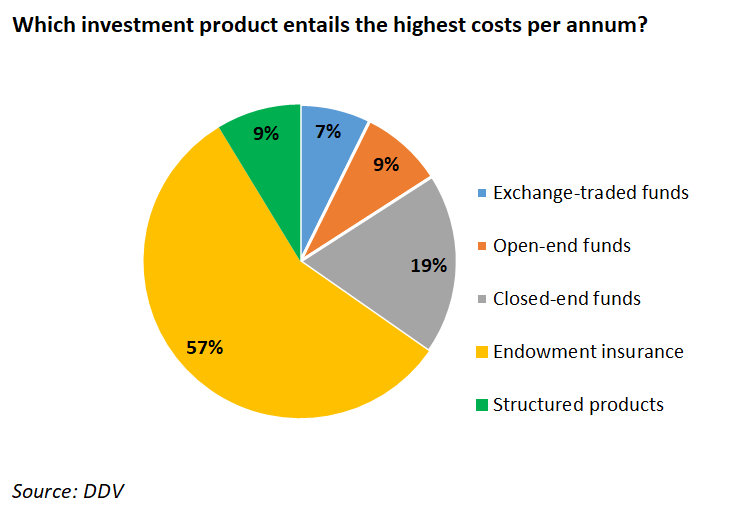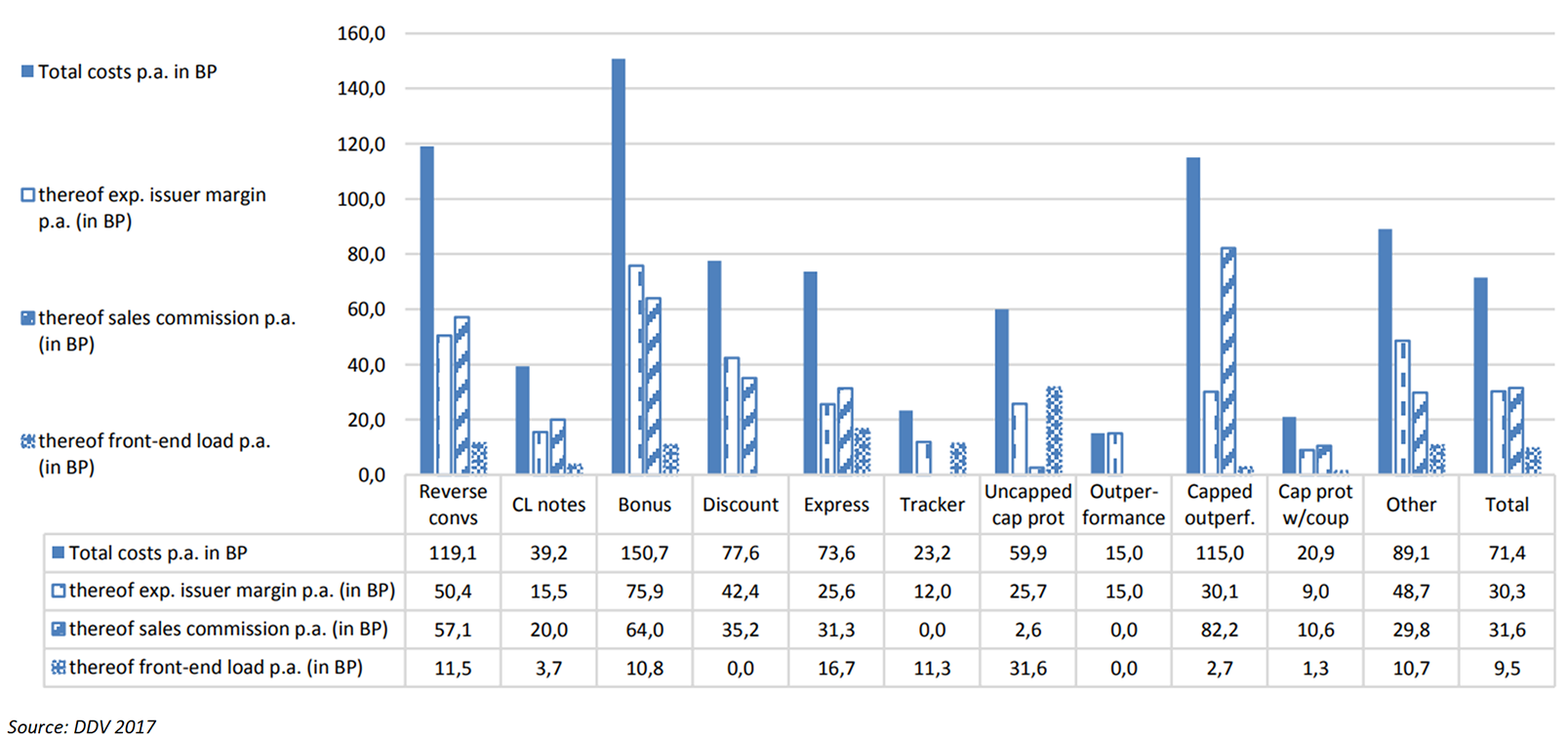Despite the myth that costs embedded in structured products are opaque and high, the latest DDV survey paints a different picture
Costs reduce return, so it is important for investors to look for low investment costs, and structured securities can certainly withstand a comparison with other investment instruments in this context, according to Lars Brandau (pictured), managing director at DDV.
“That is also borne out by an extensive academic study which shows that the overall annual cost of investing in structured products does not usually exceed one percent,” said Brandau.
The latest DDV online survey targeted at self-directed investors reveals their view on various investment products costs, with over 50% of investors seeing insurance products as the costliest investment product.
The survey also found that nearly one-fifth of investors think that closed-end funds are the most expensive instrument; seven percent think that exchange traded-funds have the highest annual cost; nine percent indicate that structured products are the costliest of all these types of products and the same percentage of investors say the same about open-ended funds.
“The topic of costs is of big interest to many investors, especially driven by regulation,” said Brandau, adding that most self-decision-makers behave in a very cost-conscious manner and look very carefully at the cost blocks that they face when buying and managing financial products.
“Nevertheless, we have to realise that there are some kind of perceived costs that do not exist in reality. Structured securities are extremely cheap and do not need to shy away from comparison to other financial products. If we look at the results, we find that in each case must be reworked and further informed.”
The DDV published a scientific study on the costs of structured securities several years ago - a research report that attracted international attention “because there were no comparable studies”.
The study (DDV Academic Advisory Board study on Total costs and cost components of investment in retail structured products December 2017) on structured products costs conducted in 2017, shows that “based on 24,830 structured products issued by the members of the DDV in the first half of 2016, constituting a total investment volume of €8.1 billion one month after issuance, the total costs from the expected issuer margin, sales commission and front-end load amounted to 71.4 basis points (bps), or 0.714 percent per year of investment.
“Of course, cost awareness is an essential element in buying securities; but it is not the only criterion,” said Brandau. “In that sense, the importance is certainly relevant and must therefore be emphasised repeatedly. Using the DDV cost study, we draw attention to the importance.”
According to the study, the average lifetime of the products was 4.8 years. Of the total costs of 71.4 bps, expected issuer margin comprised 30.3 bps, sales commissions comprised 31.6 bps, and front-end loads comprised 9.5 bps. The expected issuer margin goes to the issuer as compensation for structuring, market making, and settlement, and also includes the issuers’ profits. In contrast, the sales commissions and front-end loads compensate the distributors and advisory services.
The above-mentioned costs do not include the hedging costs – the transaction costs for the purchasing of product components, which we estimate at around 30 bps per year of investment.
The total costs for investing in structured products, including hedging costs, thus amount to around one percent per year of investment. As such, although these costs may exceed those for investing in exchange-traded funds (ETFs) linked to major indices, they are significantly below the costs for actively managed investment funds.
“We find these costs associated with investing in structured products to be low, and see them as evidence that high cost transparency has led to greater competition and, in consequence, efficient price structures,” said Brandau. “This high level of cost transparency, which the regulator will require from 2018 for all packaged retail financial products in accordance with Priips and Mifid 2 has characterised the German structured products market for years.”
In the past few years, the German DDV has done virtually nothing else but constantly ensuring uniform standards and bringing more transparency to the product landscape with research papers that can be “ordered and downloaded free of charge”.


